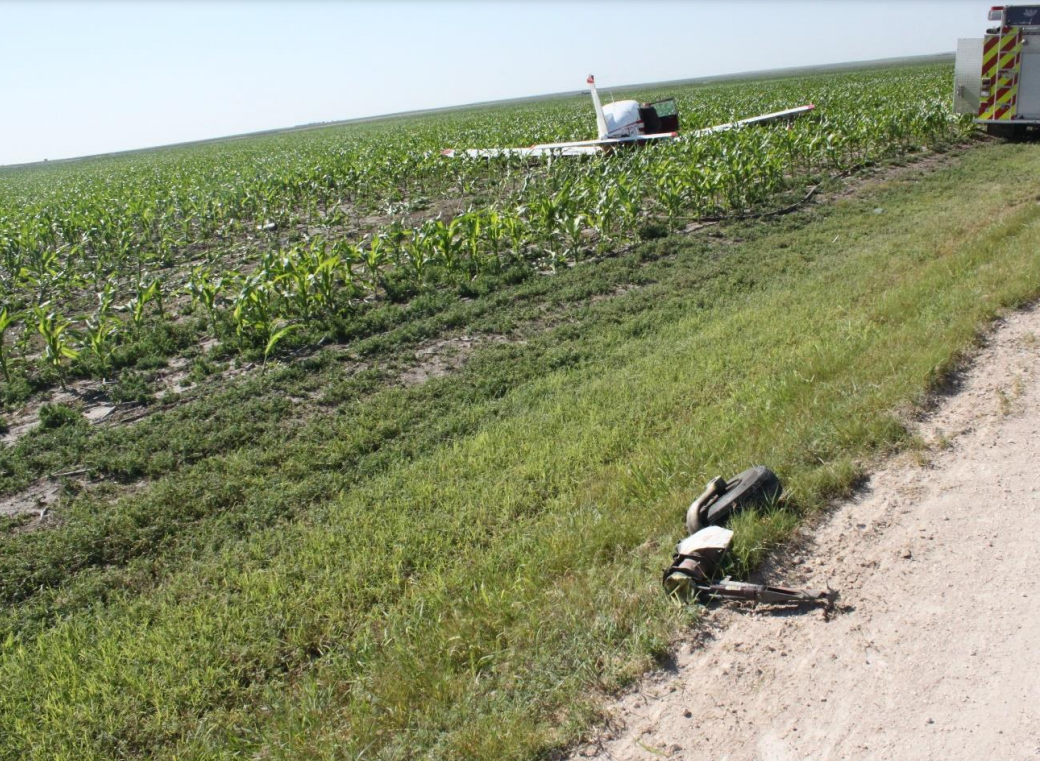
ASN Wikibase Occurrence # 316485
This information is added by users of ASN. Neither ASN nor the Flight Safety Foundation are responsible for the completeness or correctness of this information.
If you feel this information is incomplete or incorrect, you can submit corrected information.
| Date: | Saturday 24 June 2023 |
| Time: | 11:30 |
| Type: | Beechcraft B19 Musketeer Sport |
| Owner/operator: | Private |
| Registration: | N9721Q |
| MSN: | MB-493 |
| Year of manufacture: | 1970 |
| Total airframe hrs: | 3482 hours |
| Engine model: | Lycoming O-320-E2C |
| Fatalities: | Fatalities: 0 / Occupants: 1 |
| Aircraft damage: | Substantial |
| Category: | Accident |
| Location: | near Scott City Municipal Airport (KTQK), Scott City, KS -
 United States of America United States of America
|
| Phase: | Initial climb |
| Nature: | Private |
| Departure airport: | Scott City Municipal Airport, KS (KTQK) |
| Clay Center Municipal Airport, KS (KCYW) | |
| Investigating agency: | NTSB |
| Confidence Rating: |
On June 24, 2023, about 1130 central daylight time, a Beech B19, N9721Q, sustained substantial damage when it was involved in an accident near Scott City, Kansas. The pilot was uninjured. The airplane was being operated as a Title 14 Code of Federal Regulations Part 91 personal flight.
The pilot stated that after he started the engine, he let it idle about 600 rpm for a “few minutes,” and began to taxi to the runway for departure. He waited for another airplane to perform a back-taxi and depart, then he back-taxied and completed an engine run-up before realizing he left something behind. He then taxied back to the fixed base operator (FBO), collected his items, and again taxied to the runway for departure. He did not complete another engine run-up before takeoff.
During the takeoff roll, he noticed the engine rpm increased and did not note any anomalies. During the initial climb, the engine rpm maintained about 2,200 rpm with full throttle set. He stated that he was able to climb about 500 ft above ground level (agl) and attempted a return to the airport. He said that when he was abeam the runway, he thought he was “losing altitude and power,” and made a shallow left turn towards the runway. Unable to maintain altitude during the turn, the pilot landed on a dirt road. During touchdown, the airplane bounced, exited the roadway, impacted a ditch, and slid into a cornfield, which resulted in substantial damage to the fuselage.
During a postaccident examination, no preimpact mechanical malfunctions or failures were discovered that would have precluded normal operation.
When the temperature and dewpoint at the time of the accident were plotted on a carburetor icing probability chart, it was revealed that the airplane was operating in an environment conducive for serious carburetor icing at a glide power setting. The pilot stated that he checked the carburetor heat before departure. After the carburetor heat check, it is likely that ice began to form in the carburetor’s venturi during the extended ground operation before departure, which, in turn, limited the engine rpm at 2,200.
Probable Cause: A partial loss of engine power as a result of carburetor icing that formed while the engine was operating at a low power setting for an extended period before departure.
Accident investigation:
 |
|
Sources:
NTSB
FAA
https://data.ntsb.gov/Docket?ProjectID=192456
Location
Images:

Revision history:
| Date/time | Contributor | Updates |
|---|---|---|
| 11-Jul-2023 12:04 | Captain Adam | Updated |
| 06-Oct-2023 12:39 | Captain Adam | Updated |
Corrections or additions? ... Edit this accident description
The Aviation Safety Network is an exclusive service provided by:


 ©2024 Flight Safety Foundation
©2024 Flight Safety Foundation